Charred remains of a flatbread baked about 14,500 years ago in a stone fireplace at a site in northeastern Jordan have given researchers a delectable surprise: people began making bread, a vital staple food, millennia before they developed agriculture.
No matter how you slice it, the discovery detailed on Monday shows that hunter-gatherers in the Eastern Mediterranean achieved the cultural milestone of bread-making far earlier than previously known, more than 4,000 years before plant cultivation took root.
The flatbread, likely unleavened and somewhat resembling pita bread, was fashioned from wild cereals such as barley, einkorn or oats, as well as tubers from an aquatic papyrus relative, that had been ground into flour.
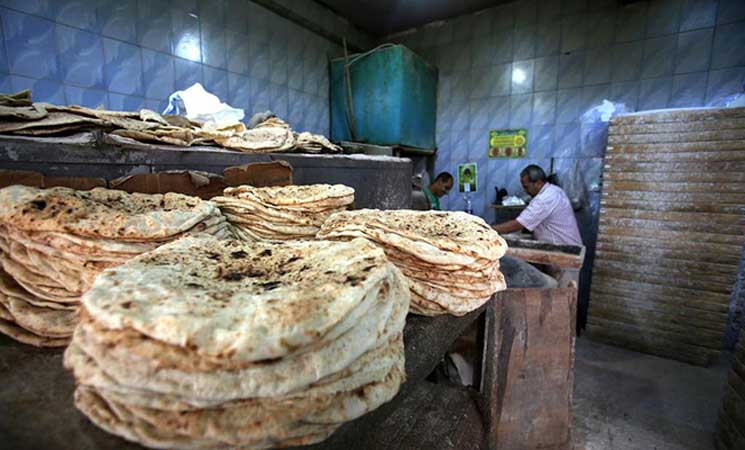
It was made by a culture called the Natufians, who had begun to embrace a sedentary rather than nomadic lifestyle, and was found at a Black Desert archeological site.
"The presence of bread at a site of this age is exceptional," said Amaia Arranz-Otaegui, a University of Copenhagen postdoctoral researcher in archaeobotany and lead author of the research published in the journal Proceedings of the National Academy of Sciences.
Arranz-Otaegui said until now the origins of bread had been associated with early farming societies that cultivated cereals and legumes. The previous oldest evidence of bread came from a 9,100-year-old site in Turkey.

"We now have to assess whether there was a relationship between bread production and the origins of agriculture," Arranz-Otaegui said. "It is possible that bread may have provided an incentive for people to take up plant cultivation and farming, if it became a desirable or much-sought-after food."University of Copenhagen archeologist and study co-author Tobias Richter pointed to the nutritional implications of adding bread to the diet. "Bread provides us with an important source of carbohydrates and nutrients, including B vitamins, iron and magnesium, as well as fiber," Richter said.
Abundant evidence from the site indicated the Natufians had a meat- and plant-based diet. The round floor fireplaces, made from flat basalt stones and measuring about a yard (meter) in diameter, were located in the middle of huts.
Arranz-Otaegui said the researchers have begun the process of trying to reproduce the bread, and succeeded in making flour from the type of tubers used in the prehistoric recipe. But it might have been an acquired taste.
"The taste of the tubers," Arranz-Otaegui said, "is quite gritty and salty. But it is a bit sweet as well."
BEST PLACES TO VISIT IN JORDAN
Petra
Nestled in a secluded valley surrounded by Jordan’s rugged mountains, Petra was left deserted and hidden from the world for hundreds of years. After being rediscovered in the 1800s, the lost city of Petra is now not only Jordan’s leading tourist attraction, it’s also one of the world’s most incredible archaeological sites, and was recently voted as one of the New Seven Wonders of the World. To reach Petra you walk through a narrow 1.2km gorge, known as the Siq. The rocks give way to reveal the incredible facade of Al Kazneh (the Treasury), which served as a royal tomb, but got its name from the legend that pirates hid their treasure there. The Treasury famously featured as the Holy Grail s last resting place in the film Indiana Jones and the Last Crusade .
Past the Treasury the hidden valley widens to reveal the remains of the city proper including dozens of ancient Nabataean tombs and a Roman rock-carved street lined with temples, royal tombs, public buildings and a vast amphitheatre. Petra s most imposing and impressive monument is Ad Deir (the Monastery), which is scenically perched above the city in the beautiful Petra Hills. The steep walk up to the Monastery takes about an hour.
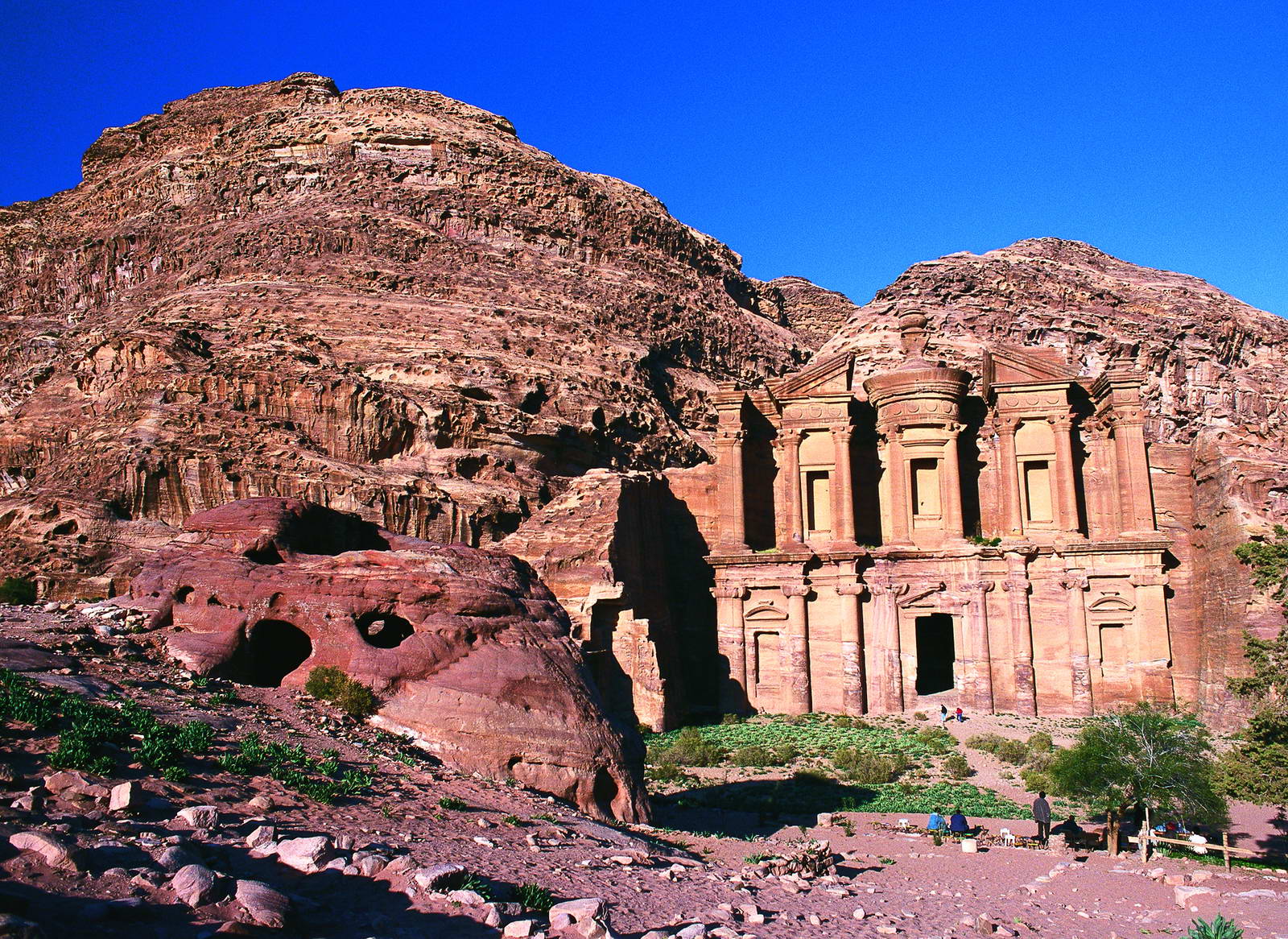
Wadi Rum
Ancient riverbeds, vast pastel-coloured stretches of sandy desert and amazing rock formations known as jebels form the incredible landscape of Wadi Rum in the south of Jordan. Wadi Rum possesses unspoilt beauty forged by millions of years of geological formation, erosion and evolution. The region is home to the semi-nomadic Bedouins who live in goat hair tents, tend to their herds of sheep and goat and preserve a lifestyle that has been practised here in the Arabian desert for centuries.
On visits to Wadi Rum we take a 4x4 desert jeep ride through the heart of the stunning desert and spend a night at a remote desert camp where we watch a beautiful sunset, enjoy a traditional Jordanian meal and camp under the stars or in tents.
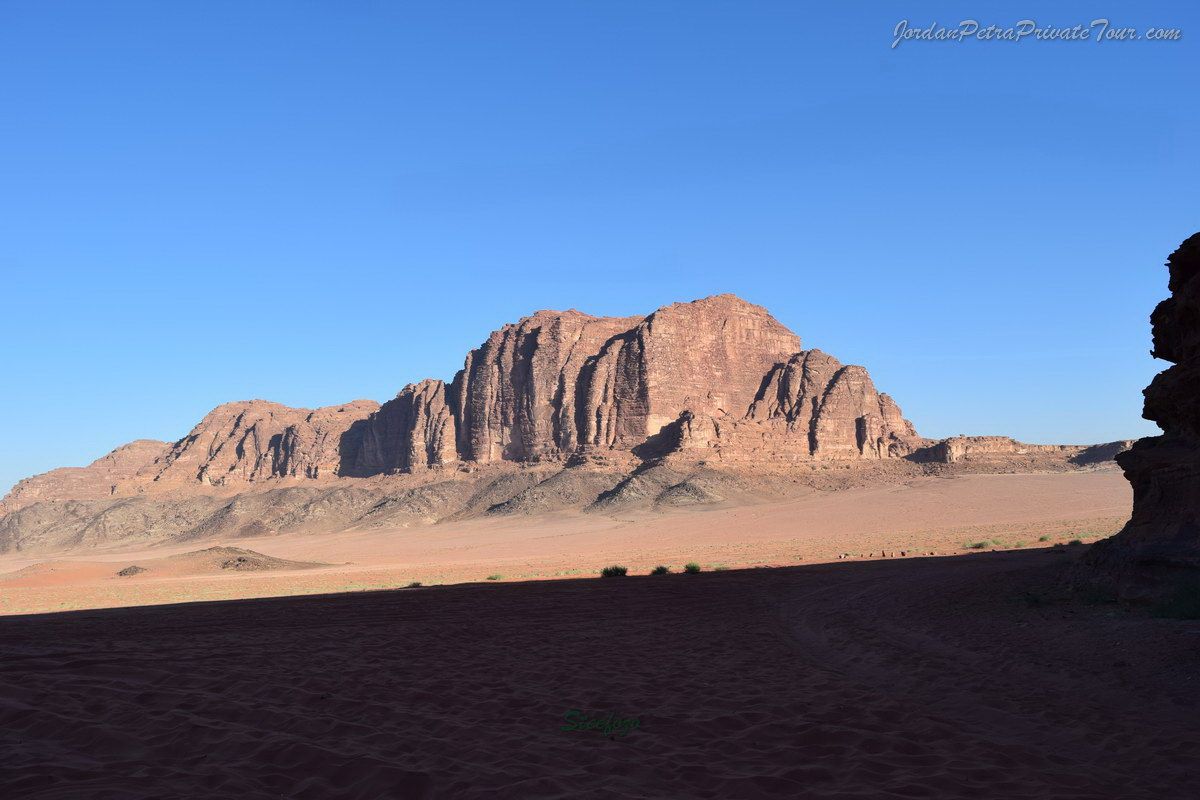
The Dead Sea
The lowest point on the earth’s surface, the Dead Sea is a fascinating natural phenomena. Straddling the border between Israel and Jordan, the mineral content of this 75km-long and 10km-wide saltwater lake is 33%, which is about six times as salty as a normal ocean. This incredibly high salt content means the Dead Sea is extremely buoyant, making it impossible to sink or swim in - the only option is to bob around like a cork! It’s called the Dead Sea as nothing can live in it. There are no fish, seaweed or plants of any kind in or around the water. What you’ll see on the shores are clusters of white salt crystals. These salts are mineral salts, which is just like you find in the oceans of the world, only in extreme concentrations. Many believe that these salts have curative powers and therapeutic qualities, and so the Dead Sea is a great place to try out a spot of pampering in the local spas.
Jerash
Second only to Petra in touristic appeal, the 2,000 year-old Graeco-Roman ruins of Jerash are recognised as one of the best-preserved member cities of the Decapolis, a confederation of 10 Graeco-Roman cities. When Emperor Hadrian paid a visit in 129 AD, the place was buzzing. The citizens threw up a Triumphal Arch for him which still stands today. Exemplifying the finesse of Roman urban life, the town boasts a hippodrome, an old sports field that once held 15,000 spectators and a stunning amphitheatre with amazing amplification abilities. There is also the forum which gracefully links the main north-south axis of Jerash and a colonnaded street paved with original stones and the rut marks of chariots and a nymphaeum replete with ancient fountains trimmed with dolphins and various temples.
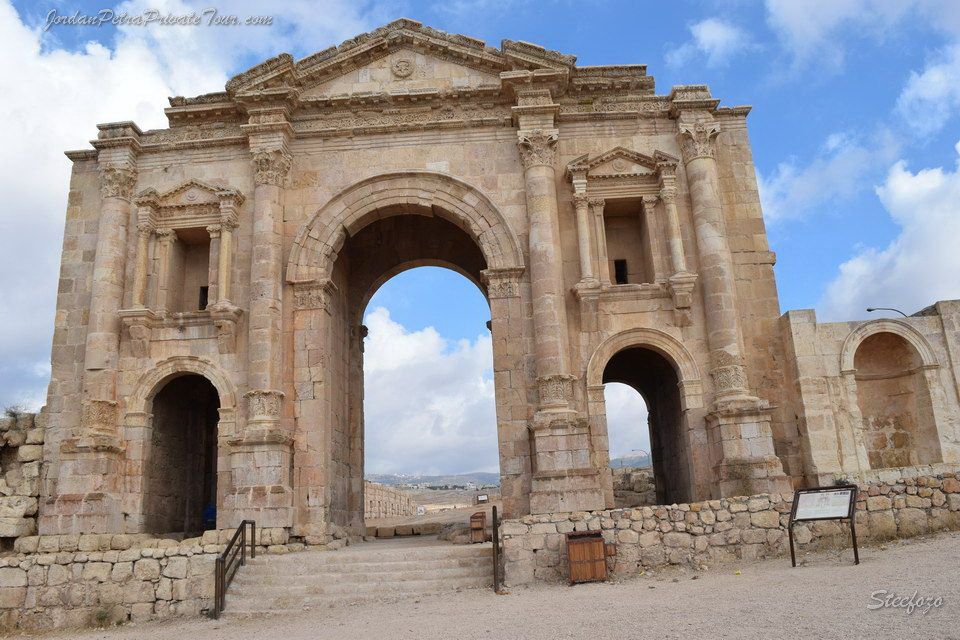
Aqaba
Situated on the tip of the Red Sea on the Gulf of Aqaba, the laid-back resort of Aqaba is Jordan’s only gateway to the sea. Renowned for its pristine sandy beaches, clear waters and colourful reefs studded with marine life, Aqaba is just the ticket for sun, fun, diving, snorkelling and swimming. Awaba is also a great place for watersports such as waterskiing, parasailing, jet-skiing and fishing and ideal for a spot of relaxation. Historically, Aqaba boasts sites dating back to 4,000 BC, including the recent discovery of possibly the world’s oldest church dating from the 3rd century AD, the remains of the medieval walled city of Ayla and a Mamluk fort.
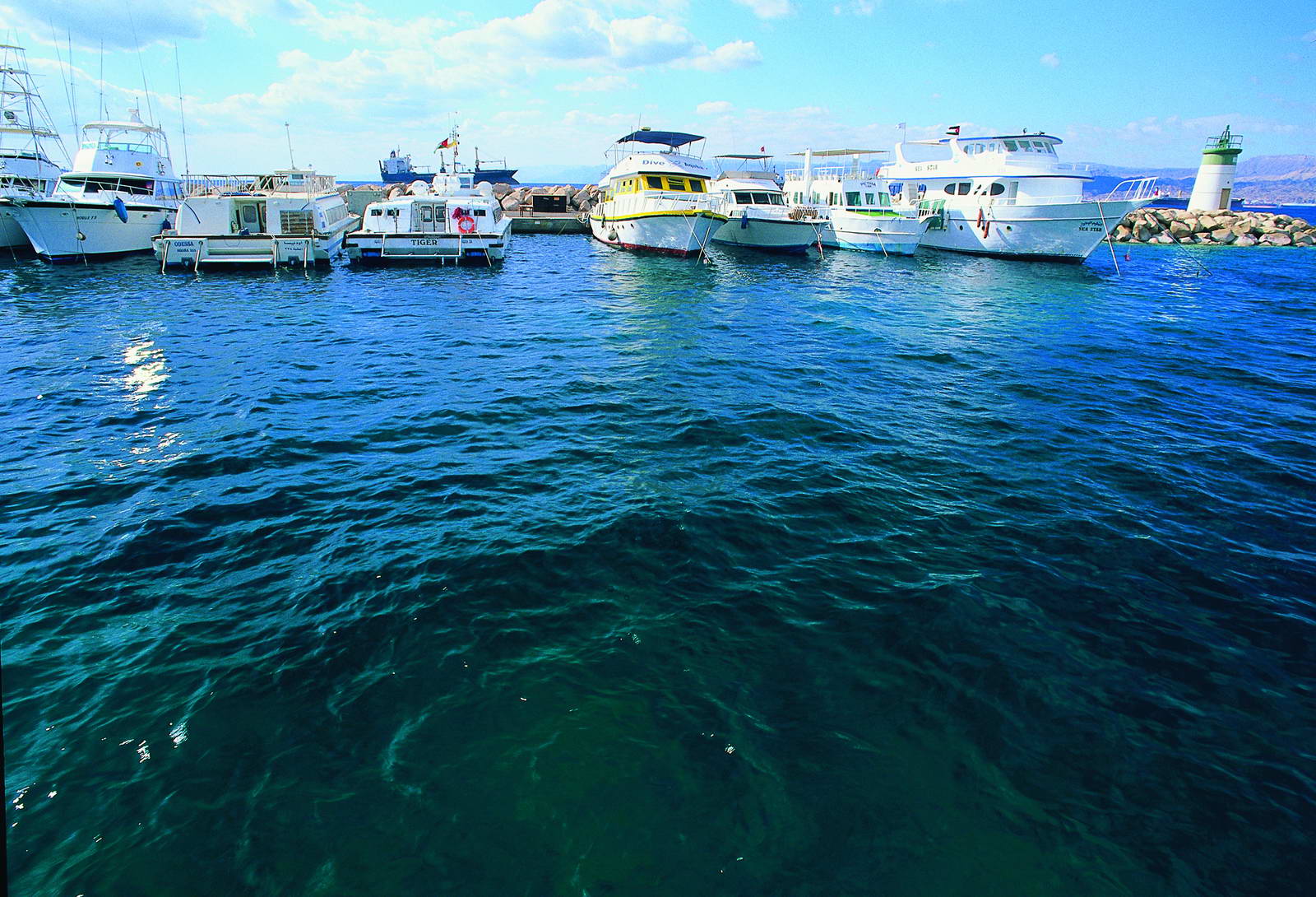
Wadi Mujib
Measuring 500 metres in depth and spanning 4 kilometres across, the impressive Wadi Mujib canyon is one of Jordan s most remarkable natural features. Located along the King s Highway and close to the east coast of the Dead Sea, the dramatic canyon features sheer rocky walls and sparkling waterways that range from puddle height to depths that are perfect for swimming trails. The canyon is just one feature of the Mujib Biosphere Reserve, the lowest nature reserve in the world, home to a surprising diversity of wildlife and plant species. With five different trails available, it s an ideal hiking spot especially in the spring (April and May) and autumn (September and October) months.
Madaba
A distinctly ancient city presided over by a magnificent mosque, Madaba is famous around the world as the home of some of the most impressive mosaics in existence. These Byzantine-era artistic masterpieces can be found on the floors of buildings across the city, the most famous being the one that covers the floor of St George’s Church. The mosaic takes the form of a map and is believed to be the oldest and most exact map of the Holy Land. Culturally, Madaba is incredibly diverse and enjoys an inspiring harmony between its Christian and Muslim communities. The city is easily walkable so travellers should take advantage of that by spending their time exploring its narrow streets, hectic markets and various holy sites. Madaba also makes an excellent base for exploring some of Jordan’s other famous sites, including the Dead Sea, the Dolmens and Wadi al Mujeb.
Mount Nebo
Rising majestically from the rugged landscape of the region just northwest of Madaba, Mount Nebo reaches a height of around 820m and is of great religious importance due to its biblical associations. It is told that it was here that Moses got a glimpse of the Promised Land before he died and because of this, the mountain has long been a site of pilgrimage for Christians from around the world. Those who take on the challenge of hiking to the mountain s summit are well rewarded with stunning panoramic views of the Jordan River, Dead Sea, Bethlehem and various other sites, just as Moses would have had all those centuries ago. Climbers will also be able to visit the Memorial Church of Moses, which includes a Byzantine basilica and Old Baptistery that were excavated in the recent past. Whether you are religious or not, climbing Mount Nebo offers a fantastic and unique way to see Jordan.
Ajloun Castle
Built nearly 1,000 years ago, Ajloun Castle sits atop a hill in the Jabal Ajlun district in northwest Jordan. This Muslim castle presides over the surrounding area and, in its day, protected three different wadis. It was also part of a postal route that was serviced by specially trained pigeons and to this day the rearing of pigeons is common in this area. Just outside of the main gate of the castle is a small explanation of the site in English along with a museum containing some of artefacts that have been found there. The walk to the top is an arduous 3km slog but every drop of sweat is made up for by the views that can be enjoyed from the top. This region sees a lot of rain, meaning that the landscape is lush and cloaked in thick, green swathes of vegetation.
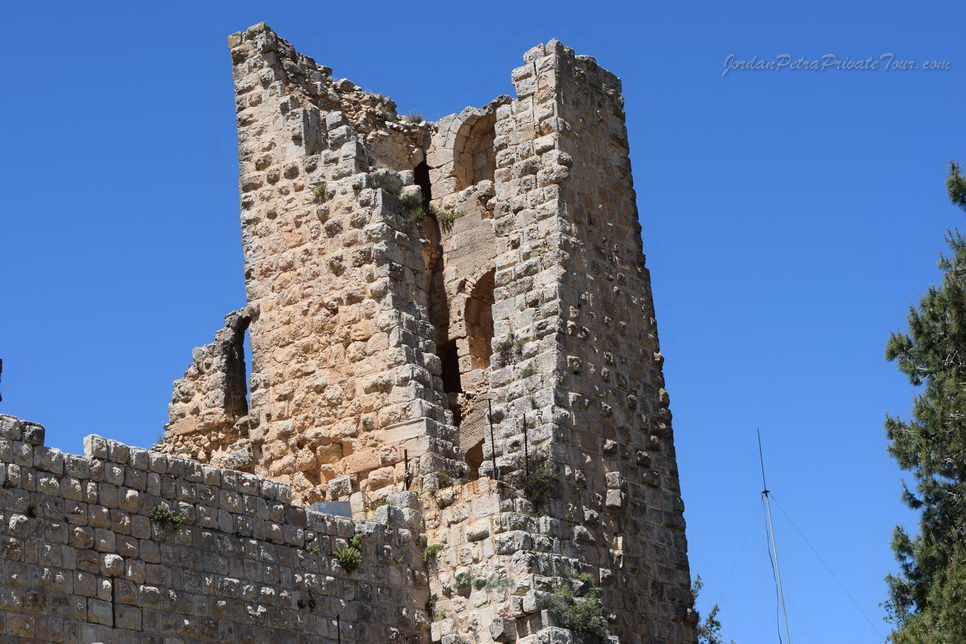
Amman
As the political, cultural and commercial capital of Jordan, it should come as no surprise that Amman is brimming with activity and has no end of exciting things to do. Today, the city is thriving and has been crowned one of the world’s most liberal Arab capitals, making it a very appealing destination for European travellers. A striking feature of Amman is how it has delicately struck a balance between the old and the new. Skyscrapers and busy streets fill the city centre, but nestled in the heart of this modern metropolis is the ancient citadel, dating back to the Neolithic period. For those looking for an authentic experience, head to the markets where you will be able to sample traditional Middle Eastern snacks and haggle with vendors over spices, perfumes and jewellery. At the end of the day, retire to one of the numerous Turkish baths for a bit of self-indulgence.
